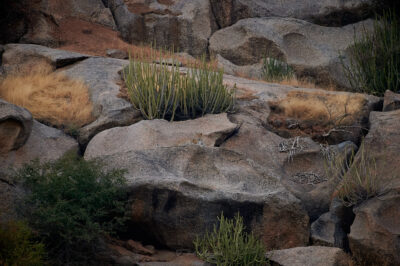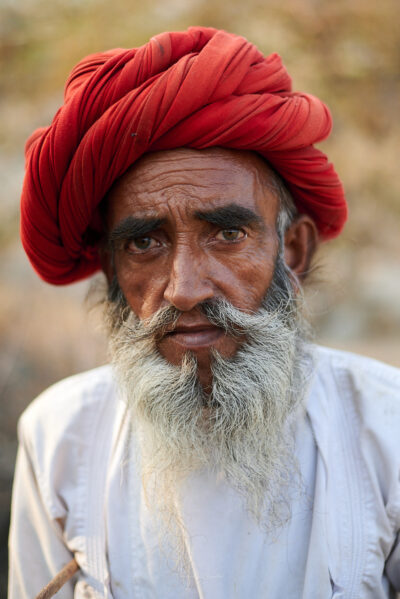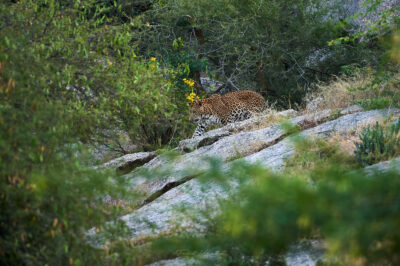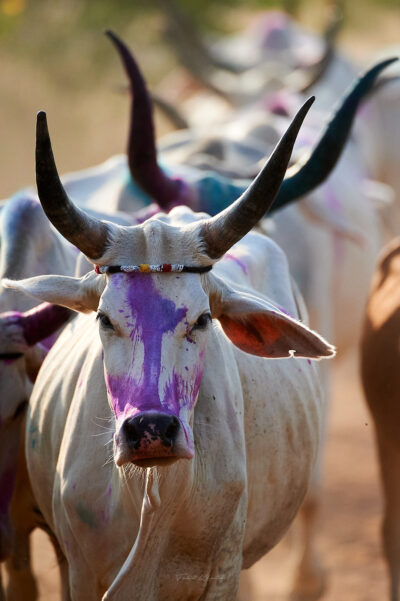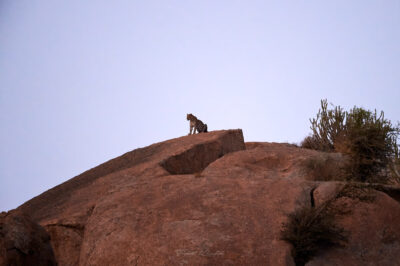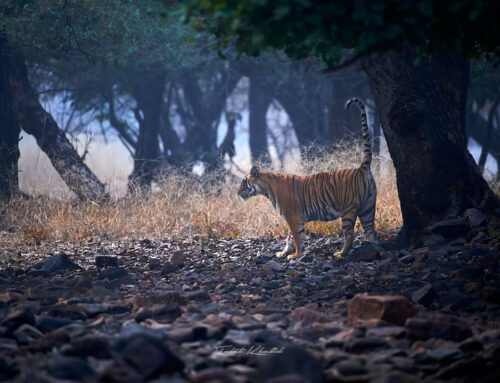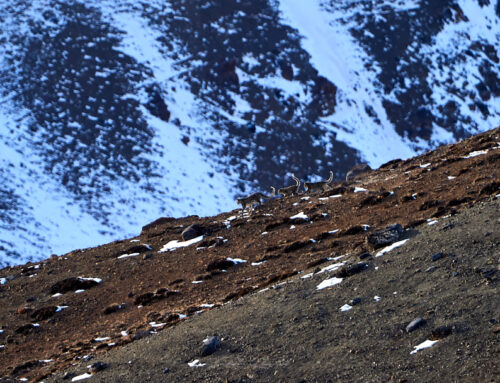Jawai and Bera Village: Leopards and Humans in Harmony
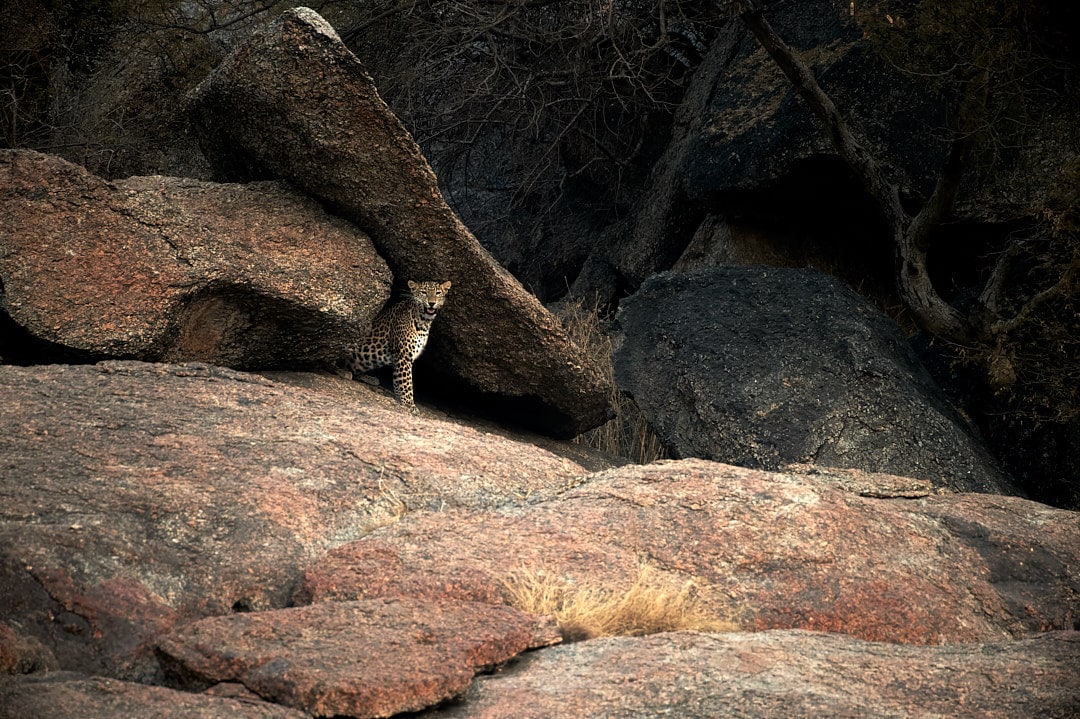
Table of contents
Intro
Jawai and Bera Village Leopards. In a world where humans find it hard to live in peace with each other. There is a place where wild leopards and humans live in harmony. This unique and beautiful place is known as Jawai and Bera Village.
Location
Nestled amidst the rugged Aravalli Hills of Rajasthan, lies a haven for one of the most elusive and magnificent cat on the planet – the leopard. Jawai and Bera Village, located in the heart of Rajasthan in the Pali district, is home to a thriving population of leopards estimated to be around 70-100 individuals approx., offering a unique and facinating experience for wildlife lovers.
Landscape
The landscape of Jawai and Bera villages is characterized by rocky hills, scrub forests, and open grasslands. The Jawai Bandh, is a reservoir on the Jawai River.
The rocky hills are perfect for the leopards. They provide plenty good hiding places to catch their prey. They also provide shelter for cubs while the mother goes hunting.
The scrub forests offer leopards cover from the sun and rain, as well as a place to raise their young. The open grasslands provide them with prey such as deer (few), wild boar, Goats, Cattle and also Dogs. Apart from leopards, there are hyenas, sloth bears in the area.
The Jawai Bandh is a valuable resource for both animals and humans. The reservoir provides water for drinking, irrigation, and hydroelectric power generation. It also attracts a variety of birds and animals, which provides food for leopards.
The landscape of Jawai and Bera villages is an important factor in the success of the leopard population in the area. The mixed landscape provides leopards with the habitat they need to survive and flourish.
Coexistence
The leopards of Jawai are known for their unique adaptation to living close to humans.
Leopards have captured the imaginations of wildlifers around the world because of the grace and stealth. Their elusive nature makes them difficult to spot. However, in Jawai and Bera Villages they are relatively easy to spot due to their population and unique habitat.
The Villagers are farmers & herders and graze their cattle and goats in the nearby open areas, sometimes very close to the leopards.
What sets Jawai and Bera Village apart from other wildlife habitats is the peacefull coexistence of humans and leopards. Here, leopards roam freely amid local residents, often seen perched on the rocky cliffs or casually strolling along the narrow pugdundees (wild trails). This rare cooperation between humans and leopards has given rise to an unusual relationship, where both parties have understood to respect and live alongside one another.
The leopards have learned not to take advantage of the humans nearby and the villagers never disturb the leopards.
The local residents of Bera and Jawai Village have accepted the leopards as an inherent part of their daily lives. These villages have become sanctuaries, where leopards find sufficient prey and a safe habitat. The villagers, on the other hand, have learned to adapt to their feline neighbors, taking precautions to ensure their safety while going about their everyday activities.
They keep their livestock indoors at night and use measures to prevent leopards from entering their homes.
Conservation Efforts
The region around Jawai was awarded the status of conservation reserve in 2013.
The villagers have also become involved in leopard protection. There is a local conservation group, the Jawai Leopard Conservation Society, which works to raise awareness about leopards and promote sustainable tourism in the area.
The Jawai Bera leopards may be a subspecies of the Indian leopard (Panthera pardus fusca) or simply an adaptation. They are smaller than most Indian forest leopards and live mostly in the rocky hills and scrub forests of the region. They are more social than their forest counterparts with many individuals living quite close or even in same area. Ofcourse this is a survival adaptation due to habitat and food constraints over the decades.
The leopards of Jawai and Bera Villages are a crucial part of the local ecosystem. They may be helping to control populations of prey animals (atleast in some areas), such as deer and wild boar.
Tourism.
Many locals over the years have tapped into the potential of the unique habitat and started homestays and resorts in the area.
A decade ago, this was a place only a few hardcore wildlifers knew and would visit. With advent of social media and a new trend to visit wildlife destinations, the place is already famous and there is a rush of tourist on weekends and holidays.
To cope with the demand of tourist there are new resorts and homestays opening every year. There is a pros and cons of becoming famous.
Apart from local run houses, there are quite a few commercial resorts from big chains offering luxury stays for the rich tourist.
Most resorts offer safaris or drives in the nearby areas. Some are good and some are just. Many of the locals who run the resorts & homestays are self educated naturalist. Few are quite knowledgable.
Sustainable tourism is the only way for the conservation of these leopards and their habitat.
Tourists who visit can help to support the local economy and to raise awareness about this place. Support local businesses who are doing quality work.
Photography
For wildlife lovers, a visit to Jawai and Bera Village is beautiful experience. Most visitors are amazed by the co-existence of humans and wildlife around the village.
For good photography, stay in a place run by a local naturalist who loves and cares about the place. This will not only give you good opportunities to photograph as locals know more about this place but will also support the community who eventually are the sole protectors of the place.
For photography stay for at-least a 2-3 nights and do the leopard safari in both morning and evenings. As with most wildlife and wild Cats, Safaris early morning and late evenings offers the best chance of sightings. The leopards are most active around dawn and dusk.
You can be sure to sight a leopard in 3-4 safaris.
For photography, a good camera with a telephoto lens of 500 or 600mm or even 800mm with convertors is ideal. Leopards here are easy to track, but usually at a distance, so a big lens is always a needed.
Also keep a short lens in range 200mm handy. Sometimes they can get close, especially in the evenings, when they walk around the area for food.
For serious photography and wildlife watching, avoid going on weekends and festival times, this place can get crowded.
Winters are mostly the best times as leopards stay out more on rocks to bask in the sun. The population of leopards is still strong so they can be tracked in any season.
Spotting a leopard in the wild is alway exciting and leaves visitors captivated. Seeing these elusive cats is a privilege.
Conclusion
A unique and fragile place worth saving.
Jawai and Bera has become quite popular with tourists and photographers alike, however with more popularity comes more crowd and more development. From a place with just 1 or 2 local places to stay, it now is flourishing with new resorts of all budgets every year.
Local naturalist are noticing some changes in leopards already.
If there is no control the whole region and unique habitat may be disturbed and disappear in a few year.
